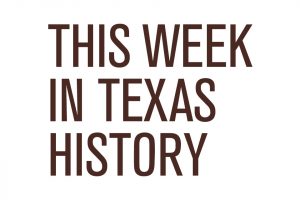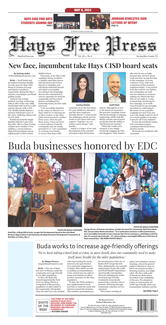Newspapers across the Lone Star State reported on Feb. 9, 1933 that “a wild man, who scales cliffs and speeds through the underbrush in the fashion of a fictional Tarzan, has been living in the hilly, wooded section near Newport.”
The story was either an imaginative hoax or the subject was nothing more than a high-strung hermit who liked to sprint through the country south of the Red River. Whatever the case, the nature lover never made it into print again.
Not so for “The Lobo Girl of Devil’s River,” a mysterious phantom Texans have been talking and writing about for a century and a half.
This incredible tale began ordinarily enough in the backwoods of Georgia. For the two years, trappers John Dent and Will Marlo pooled their pelts and split the proceeds down the middle. Then in 1833, after falling hard for a mountain maiden, Dent insisted on taking half of the hides and selling them himself.
Marlo grudgingly let his lovestruck associate have his way but brooded over the dissolution of their profitable partnership. Two weeks later, he argued with Dent for the umpteenth time, and the quarrel ended with the fatal stabbing of Marlo.
Given the choice of hanging or running for his life, John Dent chose to clear out. Before he fled the state, the fugitive swore to his beloved that he would come back for her.
Mollie Pertul patiently waited for his return, while her parents prayed she would find a more suitable spouse. On the first anniversary of the killing in April 1834, Mollie went to milk the cows and vanished without a trace. But a bloodstained Bowie knife left in a pail was positively identified as the very weapon that had taken Will Marlo’s life.
Six months later, Mrs. Pertul received a puzzling letter with a Galveston, Texas postmark: “Dear Mother. The Devil has a river in Texas that is all his own and it is made only for those who are grown. Yours with love, Mollie.”
The Pertuls, like most Americans in those days, knew as much about the distant land called Texas as they did the dark side of the moon. But they were better off not knowing there truly was a Devils River in the wild western wasteland of the Mexican province and that their daughter was living 150 miles from the closest settlement.
Another piece of news Mollie kept from her worried parents was that she was pregnant. She went into labor on a stormy day in May 1835 and quickly realized it was going to be a difficult birth. Through clenched teeth, Mollie begged John to ride for help.
He reached the goat ranch of their nearest neighbors that afternoon and hurriedly explained the situation to the Mexican husband and wife. They agreed to accompany him and were saddling their horses, when a bolt of lightning struck John Dent dead.
The Good Samaritans searched all night for the trapper’s camp and finally found it early the next morning. Mollie had died after giving birth, but there was no sign of the baby. Wolf tracks led the Mexicans to believe the child had been carried off and eaten.
Ten years later, a boy at San Felipe Springs, the Rio Grande hamlet later renamed Del Rio, watched a wolf pack devour a herd of goats. He told his disbelieving elders that one of wolves was not an animal at all but a human female about his own age.
Within the year, a woman saw the same thing – a naked girl running on all fours with two wolves. Residents were not so ready to dismiss an adult eyewitness and started searching the rugged countryside.
Two hunters trapped the wolf girl in a canyon. According to an account in “Straight Texas,” a folklore collection published in the 1937, “She cowered at first like a rabbit. Then she spat and hissed like a wildcat. She fought too, clawing and biting.”
The vaqueros were binding her hands and feet, when a snarling wolf suddenly came to her aid. A lucky shot dropped the rescuer in its tracks causing the captive to faint.
She regained consciousness in a small room in a ramshackle ranch house surrounded by several curious men. Rejecting their offers of food, water and a blanket, the girl cowered in a corner until they left the room locking the door behind them.
She soon began to howl, a long mournful sound that made the vaqueros’ skin crawl. Off in the distance her call was answered, at first by a lone wolf and then by a bloodcurdling chorus from the largest pack the nervous Mexicans had ever heard.
Their prisoner responded, as if giving directions, and the howls grew louder and closer. When the wolves seemed to be at the door, they attacked the corral and tore into the livestock.
The vaqueros ran outside firing their pistols at shadows and succeeded into driving away the pack. Suddenly remembering their prize, they rushed back inside to find that the girl had ripped the wood plank from the window and escaped into the night.
“The Lobo Girl of Devil’s River” was seen one last time six years later. Explorers following the course of the Rio Grande spotted her on a sandbar with two wolf pups. “In an instant she was upon her feet, a whelp under each arm, dashing into the breaks at a rate no horse could follow.”
Read all about Mexia, Roaring Ranger, Desdemona and Bloody Borger in “Texas Boomtowns: A History of Blood and Oil.” Order your autographed copy with a check for $28.80 to Bartee Haile, P.O. Box 152, Friendswood, TX 77549 or on-line at barteehaile.com






